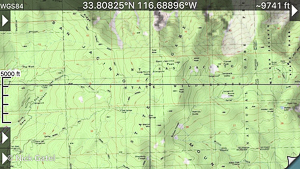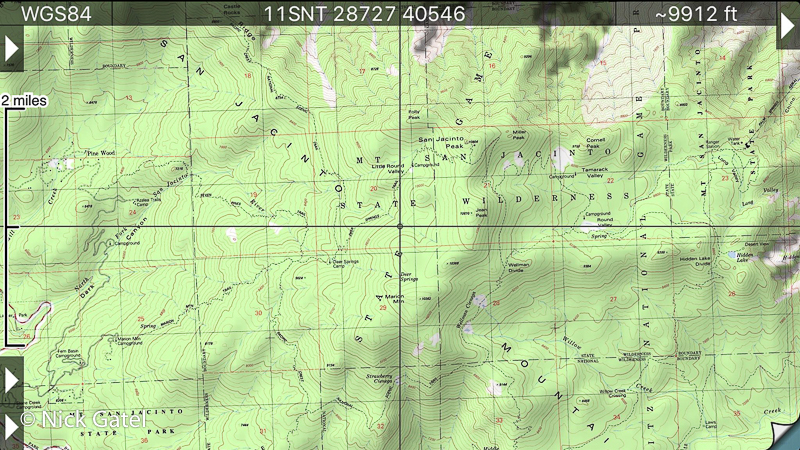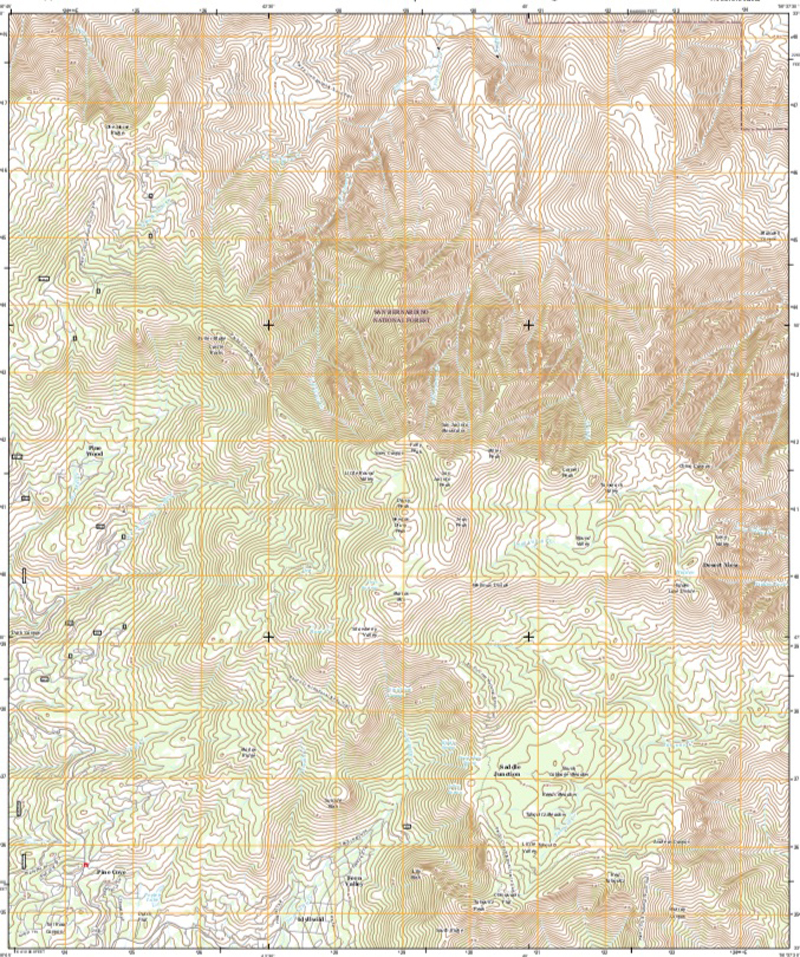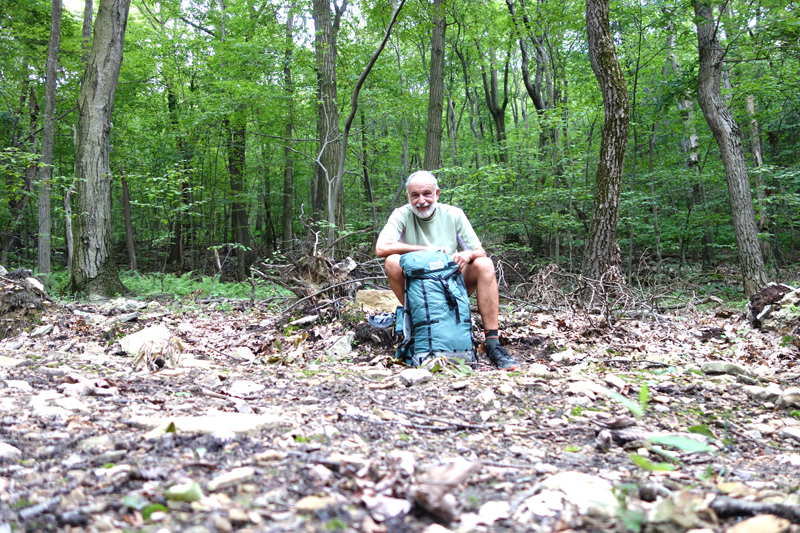Nowadays cellphones, or more precisely smart phones, are considered an important piece of equipment for backpackers. They are often included as one of the Ten Essentials.
If you feel one of these devices is essential then by all means carry one. It is not for me to tell someone what he or she should or should not carry with him or her on a backpacking trip.
On the other hand, cell phone users might be curious why I exclude it from my gear.
I Have Used Smart Phones in the Backcountry
I have taken and used smart phones on a few trips, as early as 2011 I used an iPhone 4 as a multi-purpose tool.
When Cell Phones Have Been Essential
For many years I traveled all over the country on business and at the same time managed a group of consultants who also traveled fulltime. With my phone I was able to efficiently manage my day-to-day duties. These phones made my work life much, much easier. I am not against these technological wonders. I do question if they are truly essential for the backpacker or if they might be a hindrance.
Technology in the Wilderness
Cell phones are technological wonders. If we exclude cell phones, we backpackers still use a lot of modern technology on our trips. New materials and fabrics, improved backpack and tent designs, high fill-power down garments and sleeping bags, stoves, stove fuel, instant and freeze-dried food, and even paper topographic maps are all high tech stuff compared to what I used 55 years ago as a teenager. Technology, in and of itself, isn’t a bad thing.
The Ten Essentials
The Mountaineers is organization of outdoors people in the Pacific Northwest who first compiled this list in the 1930s. It was simple and straightforward.
- Map
- Compass
- Sunglasses and sunscreen
- Extra clothing
- Headlamp or flashlight
- First-aid supplies
- Firestarter
- Matches
- Knife
- Extra food
Over the past 50 years, The Mountaineers have published a well-know book, Mountaineering: The Freedom of the Hills, which I think is now in its ninth edition. If I remember correctly, the original Ten Essentials were published in the third edition of this book around 1973.
I suspect few backpackers these days have ever read the book, but they are probably familiar with the essentials, because outdoor retailers such as REI, publish them on their websites and, of course, are happy to sell you all of them.
Over time, these essentials morphed into systems. Much more complicated, more items, and more profit for those who sell backpacking equipment.
The Ten Essential Systems
- Navigation: Map, altimeter, compass, GPS device, PLB or satellite communicators, extra batteries or battery pack
- Headlamp: Plus extra batteries
- Sun protection: Sunglasses, sun-protective clothes, and sunscreen
- First aid: Including foot care and insect repellent (if required)
- Knife: Plus repair kit
- Fire: Matches, lighter and tinder, or stove as appropriate
- Shelter: Carried at all times (can be light emergency bivy)
- Extra food: Beyond minimum expectation
- Extra water: Beyond minimum expectation, or the means to purify
- Extra clothes: Beyond minimum expectation
It isn’t recommended that every single one of these items should be included on a trip. The things that should be taken will depend upon the conditions expected.
For the first category, a smart phone can function as several of them, although most “experts” recommend that a paper map and compass should always be part of a kit just in case an electronic device malfunctions or fails.
The problem with this (I have written a few posts here on using a compass for navigation) is too many people aren’t expert with map and compass. Furthermore, map and compass use is a skill that needs to be used fairly frequently to stay competent. At times I have become rusty with these skills and have had to practice to get up to speed again.
But some smart phones are excellent as a map, compass, and GPS tool.
Smart Phone Attributes
At first glance, a phone looks to be an ideal piece of equipment. It is lightweight and multi-functional. I have owned the iPhone 4, 5S, and now an older first generation SE. All are about the same size. My current phone, the iPhone SE is only 4.87” high, 2.31” wide, and weighs 4 ounces without a protective case.
Some of the things a smart phone can be used for might include those in the chart below. Some apps might require cell reception to work, but overall there is much that can be done with a 4-ounce tool that isn’t much larger than a deck of cards (and you can play Solitaire on a smart phone too).
What is there not to like about such an impressive toolbox?
Limitations
A Lack of Cell Towers
As mentioned earlier, many of these apps require cell phone service; you need to be within range of a cell phone tower. If you are like me, you search out remote a place to hike, which usually means there is no cell phone service. Most smart phones do not need cell coverage to utilize the GPS and map functions.
Backup Power
If you are out long enough the phone needs to be recharged. There are workable strategies to conserve battery power. Mistakes like forgetting to put a phone into airplane mode or leaving the GPS function on for an extended period of time can quickly drain a battery.
For longer trips a recharging system becomes necessary. Most commonly people bring a backup power supply or even a small solar panel (which often don’t work well). It is not uncommon for people, who rely on a cell phone in the backcountry, to also bring other rechargeable devices — headlamps, a second camera, electronic water purifier — often requiring charging and sometimes an assortment of cables and/or adapters.
But a 12,000mAh backup battery weighs less than my compact Sony RX-100 camera.
Product Failures
There is always the chance of electronic failure, accidently damaging your phone, or even dropping it into a river, creek, pond, or lake. However these catastrophic events are becoming more and more rare as manufacturers improve their products, plus some phones are now advertised a waterproof.
So the limitations, other than some things require cell tower connectivity, are no longer as great as they were just 10 years ago. And if one needs cell coverage in the wilderness, perhaps they are missing the whole point of backpacking.
GPS and Electronic Topographic Maps
GPS and maps are probably the number one item that backpackers who use cell phones need, want, and use.
The purpose of a paper map or a GPS is not to figure out where you are, should you get lost, but to keep you from getting lost in the first place. Should we take a wrong turn or if a trail disappears, we aren’t really lost. Either tool can get us back on track. A GPS device does this quicker in many cases.
There are many smart phone map apps and some are surprisingly full-featured. I have found the GPS function to be pretty damn accurate too. Many years ago I purchased an iPhone app named Topo. The app downloads USGS topographic maps (this is free but the app cost me a few bucks to purchase). Maps download quickly if you have good cell service or Wi-Fi. So you really to want to download all the maps you will need prior to leaving on your trip.
The GPS will pinpoint your location on the topo map. The app has a comprehensive search tool and can locate peaks, trails, streams and rivers, lakes and ponds, springs, campgrounds, points of interest, etc. The search function even works when in airplane mode. This app is probably at least ten years old. I remember using it in 2011. Today there are apps that are much more robust and useful. I cannot comment any further since I have never used any of them other than Topo.
On my small phone, the maps are rather small. Sometimes during the planning stage of a trip I’ll use the Topo app on my iPad to figure out which paper USGS topographical maps I need, but I am not going to take either device on a backpacking trip.


Where Am I Really?
Years ago before affordable vehicle GPS units became available I often traveled for business. These trips required airplane flights to an unfamiliar city and procuring a rental car. On these trips I would use a road atlas or large paper map to plan my trip from the airport to my final destination. When the Internet became useful, I would print maps plus turn-by-turn instructions. I always knew my location and had an excellent mental picture of the geographic area.
Then I started using GPS units. I no longer needed maps. Since the GPS had a small screen I lost a sense where I really was. I knew how many miles to my destination and how long it would take. But in large metro areas where streets and freeways cut across my screen as I made progress, I really didn’t know exactly where I was.
This often happens with a GPS if it is the only tool that is used when backpacking. The small screen shows a limited area. I normally take USGS 7.5-minute quadrangle topographic maps. Depending upon the latitude, each map covers 49 to 64 square miles and includes contour lines to represent elevation changes (they are identical to the maps shown on my iPhone and iPad above).
With a large map like this, you really know where you are and you have a very good grasp of your surroundings — much more than a small screen. Should you need to navigate with a compass, it is fairly simple to visually identify a landmark and simply walk towards it. Often with a GPS, you have to walk with the device in hand and keep an eye on it — much like my example when I began driving with a vehicle GPS. Either way, if you are expert with whichever one you pick, the hiker shouldn’t get lost.

Why Do We Backpack?
Each of us has different reasons. It seems to me, more and more people hike for the social aspect more than the wilderness experience. At the same time, I do think most are looking to get away from the man-made world and immerse themselves in the wild for a while.
Whatever reason or goal any hiker has, it is valid for them.
For me, it is to get away from the distractions of civilization, clear my mind, and recharge my internal furnace. The sooner I shed the umbilical cords to the man-made world and the longer I stay in wild places, the quicker and more at peace I am with myself. I am not saying that the world we live in is bad, I like living in society. Sometimes I just need a break and time in nature is the cure.
I guess what I am really saying is we need to separate ourselves from the man-made world and connect with nature. The more man-made goods we bring with us, the more difficult it is to separate from civilization and connect with nature. Some things are required. In many wilderness areas is impractical, unethical, and even illegal to build a shelter or a bed, cook over a fire, or hunt for food. But some of the trappings of civilization we can leave behind if we so choose.
I don’t bring a book, music, journal or cell phone with me on a backpacking trip. I don’t need them and they are like a cord that keeps me connected to the place I left; the place I want to separate from for a while. This isn’t an easy thing for some people to do. I think it might be something some people may have to learn how to do. The rewards are great though.
Perhaps the coronavirus might be a catalyst for some to try completely cutting themselves off from the man-made world when they go backpacking. Let’s face it, many people who have been forced to stay at home for weeks or even months are struggling with it. They’ve binged watch Netflix until absolutely bored. Perhaps they’ve cleaned their homes and cars, more than once. Read some books, or something else to occupy their time. That’s what we do at home — occupy our time. We can teach ourselves to observe the world around us without all these contrivances.
At home, every morning I get up, pour a cup of coffee and go sit in my back yard. I might look a new flower growing on a cactus, supervise a phalanx of ants marching to a fro, listen to doves cooing, a large lizard doing push-ups on my patio, watch bees collecting nectar, or humming birds swooping down to our feeder. It is time set aside to observe the outside world around me and to do nothing else.
Evenings at home often find me gazing at the night sky for hours watching the stars and moon slowly drift westward or picking out the occasional shooting star. Between these morning and nighttime sessions in my back yard, I do things that interest me. Since I am retired, I don’t have a job, and have plenty of free time. Even so, I am so busy doing things that interest me, and I really don’t have much time to surf the Internet, watch TV or Netflix.
The point being, when I am backpacking I never get bored. I never need to listen to music or read a book. In fact, whenever I have taken a book, music, or smart phone every time I picked one of them up, it became a barrier between my surroundings and me. They in some form or another connected me to the world I wanted to leave behind for a while and at the same time separated me from nature.
Just like my routine at home, when I stop for the day to make my camp, cook, and do other necessary chores, when I am done I am perfectly happy and content to sit and watch the sunset, or explore my little temporary home. When darkness sets in, just like at home, I am happy to lie on my back and watch the sky. Not listening to music allows me to hear things like streams, owls, or even the wind rustling branches. There is so much to do with nothing in my hands or earbuds in my head. And then I fall asleep.
Whether sitting drinking my morning coffee, relaxing after dinner, or walking with my pack: taking out that little screen thingy — the phone — becomes a barrier between me and Mother Nature. It is a separation screen.
This is why I don’t take a cell phone backpacking because it is the right way — for me. It may not be for you. But it might be something to think about.

